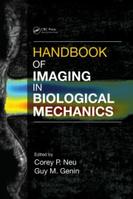Corey Neu publishes new textbook
Corey Neu, associate professor at the Weldon School of Biomedical Engineering at Purdue, co-edited, “Handbook of Imaging in Biological Mechanics,” with Guy Genin, a professor in the Department of Mechanical Engineering and Materials Science in Washington University in St. Louis and the Department of Neurological Surgery, Washington University School of Medicine.
Emerging imaging techniques have opened new fronts to investigate tissues, cells, and proteins. Transformative technologies such as microCT scans, super-resolution microscopy, fluorescence-based tools, and other methods now allow us to study the mechanics of cancer, dissect the origins of cellular force regulation, and examine biological specimens at the nanoscale.
The handbook begins with an introduction to imaging in biological mechanics by the editors and presents optimal imaging technologies to study deformation, stress, and constitutive behavior of tissues, cells, and proteins. It also describes a suite of technologies available for probing the mechanics of surfaces, membranes, and single molecules. With chapters authored by highly recognized experts in their area, the handbook covers the entire spectrum of biomechanical and mechanobiologic imaging technologies available today.
The book was published by CRC Press and is available at CRCpress.com at http://www.crcpress.com/product/isbn/9781466588134 . ISBN: #978-1-4665-8813-4.

